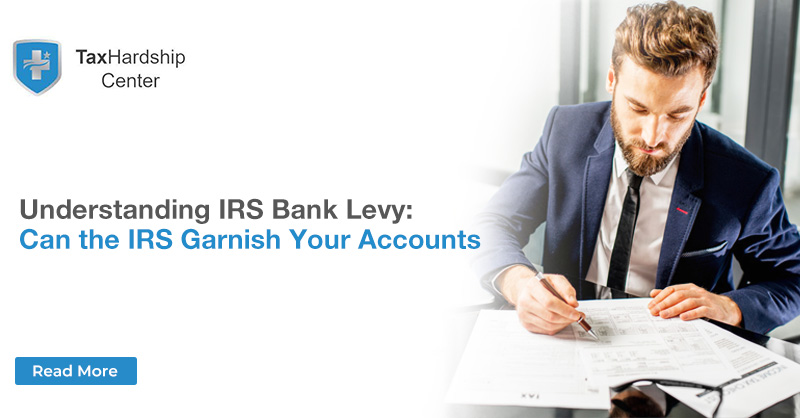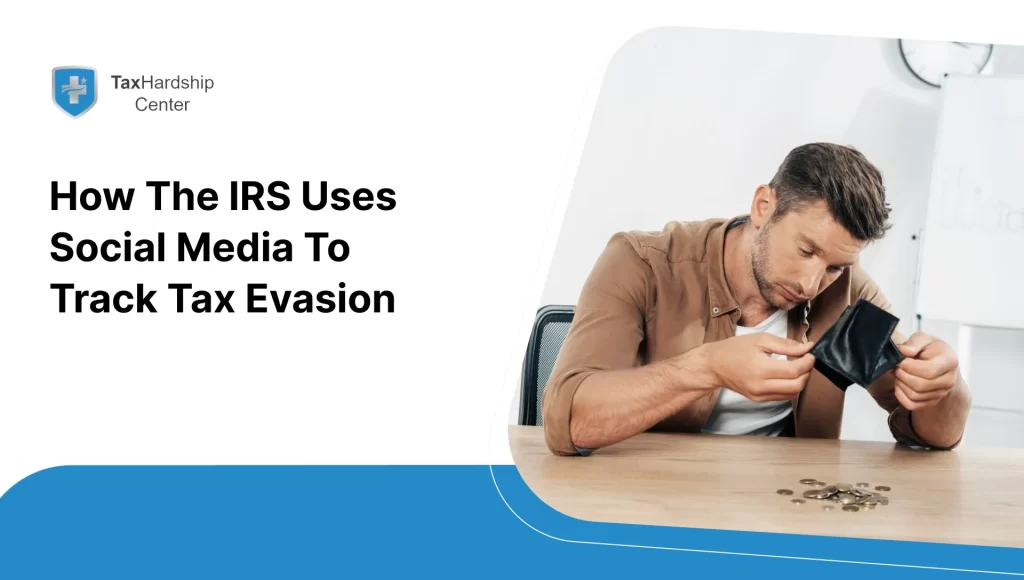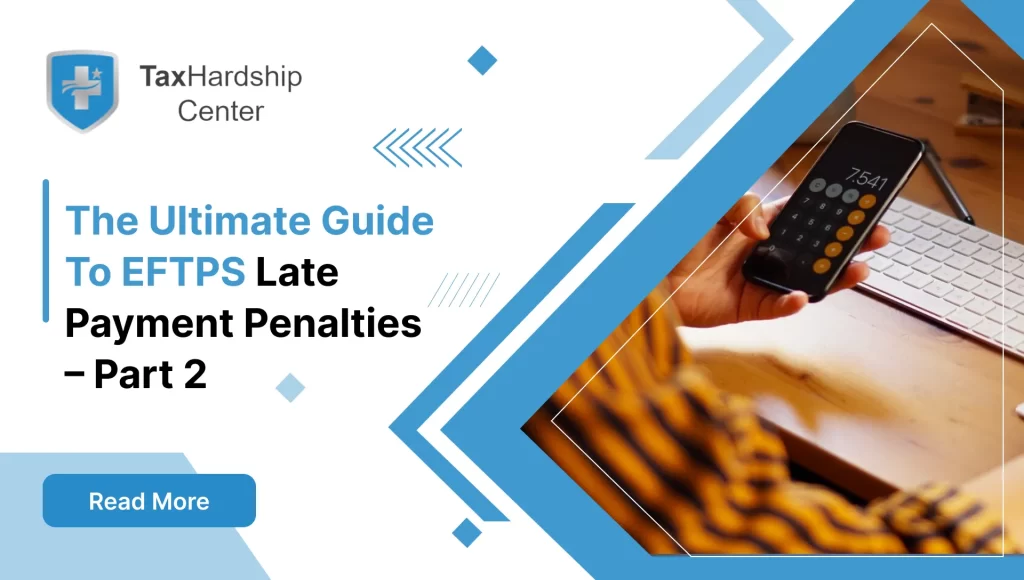Can the IRS garnish your accounts?
The Internal Revenue Service (IRS) can garnish or legally seize funds from your accounts when you have an outstanding tax debt you have not paid. This process is known as a levy. When the IRS decides to garnish your accounts, it can impact various accounts, including your wages, bank accounts, Social Security benefits, and retirement income.
The garnishment process begins when the IRS sends a Final Notice of Intent to Levy and Notice of Your Right to a Hearing after the tax due has been assessed and you have failed to pay it. If the debt is not settled or you do not make arrangements with the IRS, such as setting up a payment plan, the agency will contact your employer or the institution holding your funds to begin the garnishment. Your employer, for example, is legally obligated to withhold a specified portion of your wages to be sent directly to the IRS. Similarly, the IRS can issue a levy to your bank, directing it to freeze the funds in your account for 21 days before sending them to the IRS to cover your tax liability. This levy can be a one-time action or, in the case of wages and certain other payments, it can continue until the debt is paid in full or other arrangements are made.
Take the First Step: Facing Garnishment? Get Relief and Control with the Tax Hardship Center:
Wage garnishment got you down? You’re not alone. The Tax Hardship Center offers a guide to stop garnishments and take control of your finances.
Why Choose Us?
- Expert Guidance: Our experienced team crafts personalized solutions to eliminate or minimize your debt.
- Stop Garnishments: We explore options like installment agreements, hardship designations, and even Offers in Compromise to protect your wages.
- Guided Support: We understand the emotional toll and offer empathetic guidance.
- 14-Day Money-Back Guarantee: Try us confidently, knowing your satisfaction is our priority.
Don’t let garnishment control your future. Contact the Tax Hardship Center today for a free consultation. Together, we can build a brighter financial tomorrow.
IRS Levy, Once These Conditions Are Met
The process of tax collection by the Internal Revenue Service (IRS) in the United States is a structured sequence of events to ensure taxpayers meet their tax obligations. Levying a taxpayer’s property or assets is an action the IRS takes only when certain conditions are met, indicating severe delinquency in tax payment by the taxpayer. Below is an expanded explanation of these conditions and the process that leads to a levy:
1. Assessment of Tax and Initial Notice:
The process begins with the IRS assessing the tax, which means that the agency has determined that the taxpayer owes taxes and has recorded the liability in its system. After this assessment, the IRS sends the taxpayer a Notice and Demand for Payment. This notice informs the taxpayer of the amount of tax owed and demands payment by a specified deadline. It’s a formal statement from the IRS that there is a tax debt that the taxpayer is legally required to pay.
2. Failure to Pay Tax Bill:
The account is considered delinquent if the taxpayer fails to pay the tax bill by the due date after receiving the Notice and Demand for Payment. This failure to pay may be due to neglect or refusal. At this stage, the IRS may take additional steps to encourage payment, such as imposing penalties and interest on the unpaid tax, which can increase the total amount owed.
3. Issuance of a Final Notice of Intent to Levy:
If the tax bill remains unpaid and the taxpayer still needs to arrange an alternative payment method (such as an installment agreement), the IRS will proceed with further action. The agency sends a Final Notice of Intent to Levy and a Notice of Your Right to a Hearing. This notice is typically delivered in person, left at the taxpayer’s home or business, or sent via certified mail. It provides the taxpayer with at least 30 days’ notice before the IRS can begin to levy the taxpayer’s property or assets.
4. Advance Notification of Third-Party Contact:
The IRS must provide the taxpayer with an advance notification that it may contact third parties regarding their tax debt. This contact could be to obtain information that will assist the IRS in collecting the debt. Third parties may include employers, banks, or other entities holding the taxpayer’s assets. The notice is a vital privacy consideration, ensuring taxpayers know that the IRS might discuss their tax situation with others.
If these conditions are met and the taxpayer still does not take action to resolve their tax debt, the IRS may proceed with a levy. A levy is a legal seizure of the taxpayer’s property to satisfy a tax debt. The IRS can levy property owned by the taxpayer or has a right, title, or interest, which may comprise wages, bank accounts, social security benefits, and other assets.
However, it’s important to note that the taxpayer has rights, including the right to a fair and just tax system and the right to appeal an IRS decision in an independent forum. The Notice of Your Right to a Hearing is critical because it allows the taxpayer to request a Collection Due Process hearing with the IRS Office of Appeals. During this hearing, the taxpayer can present their case, discuss collection options, and sometimes challenge the underlying tax liability.
Understanding How the IRS Can Garnish Your Accounts: A Step-by-Step Guide
1. Accumulating Debt:
The journey towards an IRS garnishment often begins with unresolved tax debt. This can encompass various scenarios:
- Unpaid income taxes: Missed deadlines on your annual tax filing or failing to withhold enough taxes throughout the year.
- Self-employment taxes: Omitting or underpaying your quarterly estimated taxes as self-employed.
- Penalties and interest: Accumulating late filing fees, underpayment penalties, and accrued interest on outstanding balances.
2. Final Notice: A 30-Day Countdown:
Before resorting to garnishment, the IRS issues a Final Notice of Intent to Levy and Notice of Your Right to a Hearing (Letter 1058). This document serves as a final warning and grants you 30 crucial days to:
- Pay the debt fully: Settle the outstanding amount and avoid further escalation.
- Negotiate a payment plan: Work with the IRS to establish a manageable repayment schedule.
- Request a Collection Due Process hearing: Dispute the legitimacy of the debt or challenge the proposed levy action.
3. Levy Issuance: The Legal Authorization:
Failure to respond to the Final Notice or reach a resolution within the 30-day window triggers the issuance of a levy. This legal document empowers the IRS to seize funds from your bank accounts to satisfy the debt.
4. Frozen Funds: A Temporary Hold:
Once the levy is issued, your bank receives notification. They will promptly freeze your account, preventing you from accessing any funds. This ensures the funds are readily available for collection by the IRS.
5. 21 Days of Holding: A Window of Opportunity:
For 21 days following the levy’s arrival at your bank, the funds remain frozen but still need to be transferred to the IRS. This window provides you with a final opportunity to:
- Contact the IRS: Discuss alternative solutions, negotiate a payment plan, or contest the levy’s validity.
- Claim exemptions: Certain categories of funds, like Social Security benefits or child support payments, may be exempt from garnishment.
6. Transferring Funds to the IRS: Debt Settlement:
If you don’t act within the 21-day holding period, the frozen funds will be transferred to the IRS to offset your tax debt directly. This effectively reduces your outstanding balance and concludes the garnishment process.
Key Numbers to Remember:
- Thirty days: The crucial timeframe to respond to the Final Notice and avoid garnishment.
- Twenty-one days: The holding period for your funds after the levy is issued, offering a window for action.
- $12,550: The exempt amount for individuals in 2024, protecting some of your funds from garnishment.
- $25,100: The exempt amount for married couples filing jointly in 2024, offering additional protection for shared accounts.
Additional Points for Consideration:
Garnishment is not the IRS’s first course of action. They typically attempt to collect debts through other means like notices, phone calls, and even wage garnishments before resorting to seizing bank accounts.
You can appeal a levy if you believe it’s incorrect or unfair. Seeking legal or tax professional advice can be crucial in navigating this process.
Remember, proactive communication and timely action are crucial to mitigating the impact of IRS garnishment and finding a workable solution for resolving your tax debt.
Escaping the IRS Net: Avoiding Wage Garnishment with Data-Driven Strategies
Facing wage garnishment by the IRS can be a daunting experience, with 15% of your wages, retirement plans, and even social security at risk. But it’s not a helpless situation. Effective strategies backed by data can empower you to navigate these complexities and protect your financial future. Here’s a deeper dive into some proven approaches equipped with relevant statistics to guide your informed decision-making:
1. Installment Agreement (IA): A Gradual Escape Route
- Prevalence: Over 1.5 million taxpayers embraced installment agreements last fiscal year, signifying its popularity as a manageable escape route.
- Outcomes: While offering relief, understand the additional costs. IRS data shows an average penalty and interest accrual of 8% on outstanding balances under IA, adding to your total debt.
- Pro-Tip: Negotiate a lower monthly payment for longer repayment terms to minimize accrued interest and ensure affordability.
2. Partial Payment Installment Agreement (PPIA): A Tailored Option, But…
- Popularity: Around 30% of IA seekers choose PPIA, highlighting its appeal for managing limited resources.
- Success Rate: However, research reveals a 60% chance of default compared to full IAs, emphasizing the importance of realistic financial planning.
- Caveat: PPIA can lead to extended repayment periods and potentially higher cumulative costs. Weigh the pros and cons carefully before opting for this route.
3. Offer in Compromise (OIC): Debt Relief, Rigorous Scrutiny
- Approval Rate: While tempting due to its promise of reducing debt, understand the stringent evaluation process. Only 40% of OIC applications get approved, demanding meticulous preparation and evidence of financial hardship.
- Preparation is Key: Gather extensive documentation of your income, expenses, and assets to ensure a thorough review and improve your chances of success.
- Seek Expert Guidance: Consider professional assistance from qualified tax specialists to navigate the OIC application process and maximize your chances of approval.
4. Currently Not Collectable (CNC): A Temporary Sanctuary
- Numbers Speak: IRS data reveals a 10-year high in CNC status, showcasing its importance as a safety net for individuals facing severe financial hardship.
- Criteria for Qualification: Understand the conditions. Income below a certain threshold, significant hardship circumstances, and inability to pay any reasonable amount are critical factors for consideration.
- Temporary Relief: Remember, CNC is not a permanent solution. Regularly update the IRS on your financial situation and work towards improving your financial standing to avoid future collection actions.
Empower Yourself with Data and Knowledge:
Navigating the intricacies of avoiding wage garnishment requires proactive effort and informed decision-making. By understanding each strategy’s prevalence, success rates, and potential drawbacks, you can choose the path best suited to your unique circumstances. Remember, data is your ally in this situation. Use it to assess your options, negotiate effectively, and chart a course toward financial freedom.
Conclusion:
In the complex landscape of IRS actions, understanding the potential garnishment of your accounts is crucial. The IRS employs a structured process, beginning with the tax assessment and culminating in issuing a levy if certain conditions are met. Taxpayers facing this situation must know their rights, including the opportunity for a Collection Due Process hearing. The step-by-step guide provides insights into how taxpayers may find their accounts garnished and underscores the importance of timely and informed action to mitigate the impact.
Need More Clarity On Garnishment?
At the Tax Hardship Center, we understand the stress and uncertainty of taxes. Our seasoned tax professionals are prepared to dive deep into your unique situation, offering a comprehensive expert review of your tax problems at no cost. If you need help deciding what steps to take next, our free consultation can shed light on potential solutions you may have overlooked.
- Objective Assessment: Receive an unbiased evaluation of your tax debt.
- Expertise at No Initial Cost: Benefit from expert advice without the upfront financial commitment.
- Discover New Strategies: Learn about lesser-known tax relief options tailored to your needs.
Ready to reclaim control over your financial life? Contact us today for your free consultation and let our experts help you chart a course toward tax debt relief.
FAQs:
1. Can the IRS garnish all types of accounts?
Yes, the IRS has the authority to garnish various accounts, including wages, bank accounts, Social Security benefits, and retirement income.
2. What triggers the garnishment process?
The process is triggered when a taxpayer has an outstanding tax debt that they have not paid, and the IRS has issued a Final Notice of Intent to Levy.
3. How can a taxpayer avoid garnishment?
A taxpayer can avoid garnishment by settling the debt, making arrangements with the IRS, setting up a payment plan, or requesting a Collection Due Process hearing within the 30-day window in the Final Notice.
4. What happens during the 21-day holding period?
During this period, the taxpayer can contact the IRS, discuss alternative solutions, negotiate a payment plan, or contest the levy’s validity.
5. Are there exemptions to garnishment?
Specific categories of funds, such as Social Security benefits or child support payments, may be exempt from garnishment. It’s essential to be aware of these exemptions during the process.
6. Can a taxpayer appeal a levy?
Yes, the taxpayer can appeal a levy if they believe it’s incorrect or unfair. Seeking legal or tax professional advice can be crucial in navigating this process.
7. What are the key numbers to remember during the process?
The crucial timeframes are 30 days to respond to the Final Notice and 21 days as the holding period for funds after the levy is issued. Exempt amounts are $12,550 for individuals and $25,100 for married couples filing jointly in 2024.








